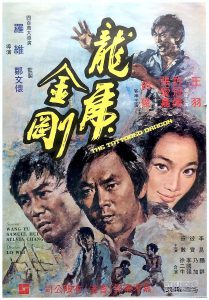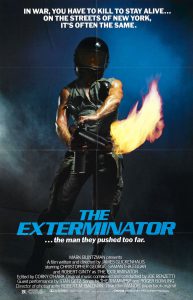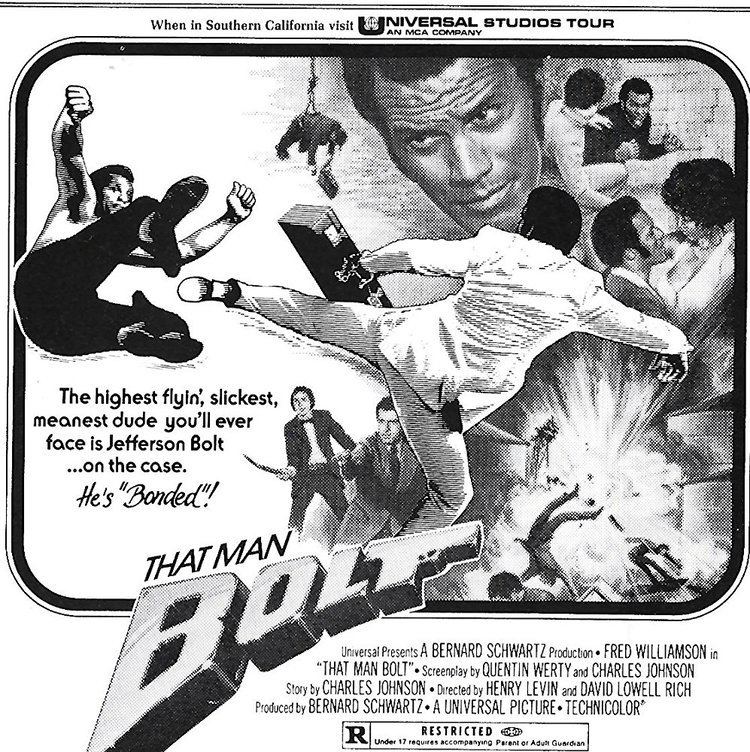When I was in school, ninjas were the height of cool. There were always one or two guys in my shops classes that were secretly making ninja weapons when they should have been working on their assignments. I witnessed guys making “numchucks” or nunchaku sticks in wood shop. I saw guys making throwing stars in metal shop – and had to duck a few times when they threw them at me. I even remember some persistent geniuses making weapons out of the raw materials in electronics shop. I don’t recall anyone making weapons in food shop (or cooking class as some people called it), but that didn’t mean food shop wasn’t a dangerous place – and not just because there were knives and forks around.
In my first year of junior high school, students were forced to try ALL of the shops classes – regardless of which ones might have interested them. I guess it was almost like a sampler year; we spent a few weeks in each shop to give us an idea of what it would be like to take any one of those classes for a full year (or half year as the case might have been). This meant that my friends and I were forced to take sewing and cooking, alongside more traditionally “male” activities such as sawing wood and building speakers for telephones (it should be noted that not too many years before that, guys weren’t even ALLOWED to take those shops – and vice-versa for girls). As it turned out, many of us guys decided that food shop was actually the best place to be. Not only was it fun to learn how to bake a cake or make Jamaican Patties, but it meant that we got to eat a free meal at the end of each class. What could be better than that?
Another positive side effect of being in food shop all afternoon was that there were very few psychopaths trying to make weapons and hurl them at us. I won’t go so far as to say that there were none, because two of the most annoying troublemakers in the school decided that they liked to bake their cakes and eat them too. The class was divided into several kitchens, each one with two to four people in it. My kitchen included a good friend of mine, Kevin, and a couple of other decent guys. The kitchen next to us featured the two troublemakers. One of the troublemakers was physically smaller than Kevin and me, but he was always getting in our faces – perhaps because he felt he had to prove himself. He walked into our kitchen on the first day and put Kevin into a headlock while we were seated at our table. I got up and told him to get out. He said something unfriendly, but I grabbed his arm and carefully led him out of our kitchen. I say carefully, because I was trying to diffuse a potentially bad situation. I was studying Tae Kwon Do at the time, and probably could have wiped the floor with this guy, but he had a lot of friends – many of whom were much bigger and more dangerous than him.
After he was gone, Kevin got up from the table and said “That guy smelled like dried piss.”
We both laughed, and from that day forward we always referred to that guy as Dried Piss.
“If he smelled so bad, ” I asked, “then why did you just keep sitting there? Why didn’t you do something?”
“I considered calling him an asshole,” Kevin said.
I laughed and said ” Next time help me kick him out.”
The other troublemaker, and kitchen-mate of Dried Piss, was the de-facto leader of all the troublemakers at our school. He was larger than Dried Piss – and larger than us, too. He wore a stupid looking bandana around his head, and liked to cause trouble for me in particular. He was clearly more dangerous than Dried Piss, but I was fairly confident that my martial arts training would serve me well in a fight against him. My bigger concern was the gang of goons that he would send after me in retaliation. Part of me wanted to fight him anyway – and for a while I was convinced that a showdown between us was inevitable – but that’s part of a much larger story that did not ultimately play out in food shop.
Stupid Bandana would periodically invade our kitchen, and I would carefully shove him back out. Over time I got less careful, and I’m still not sure how the situation never escalated further than smirking and insulting words aimed at Kevin and me. Perhaps on some level Stupid Bandana knew that it would be a bad risk to fight a trained martial artist. He was one the people who made ninja weapons in wood and metal shop, but he was certainly no ninja and I think he knew that. Perhaps he was afraid that my non-weapon-building friends and I might be – if not actual ninjas – whatever the Tae Kwon Do equivalent might have been. We weren’t, of course, but we enjoyed watching ninja movies. Enter the Ninja (1981), Revenge of the Ninja (1983) and Ninja III: The Domination (1984) were the holy trinity, of course. We discovered American Ninja (1985) a little bit later, but for some reason I did not watch any of the sequels until very recently…
American Ninja 3: Blood Hunt (1989) is not the continuing saga of Joe Armstrong, American Ninja, as played by Michael Dudikoff. Apparently Michael Dudikoff was originally supposed to be in this movie, but he was feeling “burned out” on martial arts and didn’t like the fact that the movie was going to be filmed in South Africa while apartheid was still going on. Dudikoff did return to star in American Ninja 4: The Annihilation (1990).
I knew nothing about American Ninja 3: Blood Hunt prior to last Friday, and I had expected David Bradley to be playing the same character, Joe Armstrong, that Michael Dudikoff had played. Much to my surprise, he plays a different guy named Sean Davidson – who is also referred to as The American Ninja at times. Steve James, who reprises his role as Curtis Jackson, does not know Sean Davidson at the beginning of this movie. At one point he says to him “Are you a ninja?” and Sean answers yes. “That explains a lot…” Curtis says.
So, it’s like Curtis makes an easy transition from best buddy of Joe in the first two movies, to best buddy of Sean in this one. I’m not sure why they didn’t just have David Bradley play Joe Armstrong, the way Roger Moore took over the role of James Bond. But in some ways, it just adds to the inspired lunacy of this movie, so I guess that’s a plus. It also paved the way for American Ninja 4: The Annihilation to feature BOTH David Bradley and Michael Dudikoff playing their respective characters. I haven’t seen that movie yet, but if it isn’t cinematic gold then something is wrong with the universe.
American Ninja 3: Blood Hunt is not as good as the first two movies. David Bradley is a really good martial artist – perhaps better than Michael Dudikoff, but Dudikoff is a better actor than Bradley. The story is relatively ludicrous – which could actually be a good thing – and Steve James doesn’t have enough to do in this movie (although he is great at what he does). In some ways they should have just made a movie about his character. Having said that, American Ninja 3 is still quite entertaining for anyone with a taste for this kind of late ’80s insanity. One of the characters makes use of disguises in ways that are a constant source of delight. And who doesn’t love watching scores of incompetent ninjas getting knocked around the screen?
All in all, American Ninja 3: Blood Hunt (1989) is a very pleasant way to pass a #FridayNightAtTheHomeDriveIn. While it may not have reached the heights of other third-in-the-series vigilante action films (hello Death Wish 3 (1985)), it continued the flow of quality ninja entertainment from The Cannon Group – a veritable fount of #NotQuiteClassicCinema that has rarely – if ever – been equalled.
 The Tattooed Dragon (1973) by #WeiLo
The Tattooed Dragon (1973) by #WeiLo




